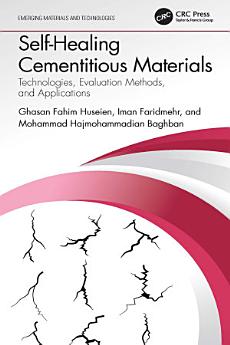Self-Healing Cementitious Materials: Technologies, Evaluation Methods, and Applications
À propos de cet e-book
This book:
- Examines concrete structures based on various materials with self-repair capability and their implications for future use in sustainable projects.
- Discusses advantages and design strategies of self-healing concretes.
- Covers several effective and detailed self-repair methods, with comparative analysis of the advantages and disadvantages of each method.
- Examines the use of various materials, including polymers and nanomaterials.
- Reviews factors affecting performance, properties, and applications.
- Delves into future directions and opportunities.
Written for researchers, advanced students, and industry professionals, Self-Healing Cementitious Materials: Technologies, Evaluation Methods, and Applications offers a detailed view of an important emerging technology in materials science, civil engineering, and related fields.
À propos de l'auteur
Ghasan Fahim Huseien is a research fellow at department of Building, School of Design and Environment, National University of Singapore, Singapore. He received his PhD degree from University Technology Malaysia in 2017. He is involved in the applied R & D research on evaluation and application of various types of materials to repair cracks, damaged surfaces in concrete”; “Applied R & D and utilization of industrial and agriculture wastes (to reduce cost, energy and environmental problems) for the existing and future construction of concrete structures, both in the laboratory and in the field”. He has authored and co-authored more than forty-five technical report and significant publications, two books and eight book chapters. He is peer reviewer for several international journals as well as Master and PhD students. He is a member of Concrete Society of Malaysia and American Concrete Institute.
Iman Faridmehr is a senior research assistant at the South Ural State University, Russian Federation. His research agenda focuses on the cost-effective design of structures in compliance with sustainable design strategies, using low embodied energy materials and novel construction techniques. He has been involved in many collaborative research projects with researchers from different universities, including the Norwegian University of Science and Technology (NTNU), the National University of Singapore (NUS), and Universiti Teknologi Malaysia (UTM). Iman is (co‐) author of 19 journal papers indexed by the Web of Science Core Collection. He provides service as a reviewer board for scientific and scholarly journals, including Archives of Civil and Mechanical Engineering, Engineering Structures, Advances in Structural Engineering, and Construction and Building Materials.
Mohammad Hajmohammadian Baghban is an Associate Professor in building and construction technology at the Norwegian University of Science and Technology. He is a well-experienced researcher on developing sustainable and multi-functional building materials and components. He is also skilled in modelling and optimization methods, including the application of evolutionary optimization methods and machine learning in Civil Engineering. Presently, he is the director of the Building Material Laboratory at his department at NTNU, and an active member of Norwegian Concrete Association (NCA), Nordic Concrete Federation (NCF), as well as the European Construction, built environment and energy-efficient building Technology Platform (ECTP). He is (co-) author of more than 30 peer-reviewed articles in his field and has served as a review board in relevant conferences and journals from different publishers, including Springer, MDPI, and Elsevier.





